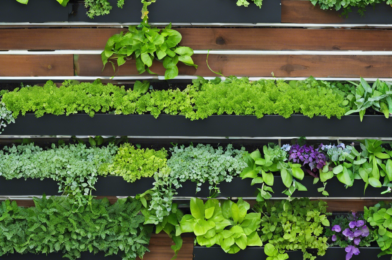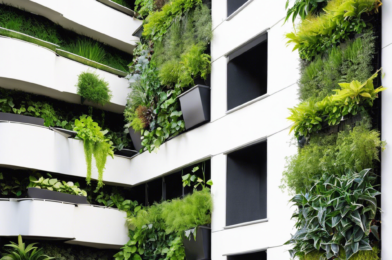# Vertical Gardening: A Green Revolution in Urban Spaces
In the concrete jungles of urban areas, where space is a luxury, a new gardening trend is taking root – vertical gardening. This innovative approach to horticulture is transforming city landscapes, allowing residents to cultivate their green thumbs in even the smallest of spaces. With its numerous benefits, vertical gardening offers a breath of fresh air to urban dwellers, literally and metaphorically.
**Maximizing Limited Space**
In urban environments, where land is often scarce and expensive, vertical gardening is a practical solution. By utilizing vertical surfaces such as walls, balconies, and fences, residents can create lush green spaces without sacrificing precious square footage. Imagine transforming a dull balcony into a vertical oasis with cascading herbs, colorful flowers, and even miniature vegetable gardens.
**Aesthetics and Urban Greenery**
Vertical gardens add a touch of natural beauty to the concrete and steel surroundings. They can be designed to create living artwork, with plants carefully curated to form patterns, logos, or even words. Imagine walking through a city alley filled with vibrant green walls, providing a peaceful sanctuary amidst the urban hustle and bustle.
**Health Benefits and Wellbeing**
The presence of plants in urban areas has been linked to numerous health benefits. Vertical gardens improve air quality by absorbing carbon dioxide and releasing oxygen, creating healthier living environments. Studies show that exposure to greenery can reduce stress, enhance mood, and even improve cognitive function. For city dwellers, having a vertical garden can be a soothing hobby and a mental health booster.
Creating a vertical garden also encourages residents to spend more time outdoors, promoting a healthier lifestyle. Gardening is known to have therapeutic benefits, providing a sense of purpose and relaxation.
**Low Maintenance and Sustainable Agriculture**
Contrary to popular belief, vertical gardens can be low-maintenance. Many plants suitable for vertical gardening are hardy and require minimal care. Self-watering systems and automated irrigation can further simplify the process. Vertical vegetable gardens allow urban dwellers to grow their own organic produce, reducing their carbon footprint and promoting sustainable living.










